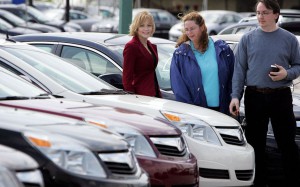The Federal Reserve Bank of New York reports that more than 7 million Americans are delinquent on auto loans, even more than during the Great Recession.
The figures, which were part of New York Fed’s quarterly report on household credit, suggest that many consumers are having a difficult paying their bills. Rising prices for both new and used vehicles also are factor, economists said.
“Although rising overall delinquency rates remain below 2010 peak levels, there were over 7 million Americans with auto loans that were 90 or more days delinquent at the end of 2018. That is more than a million more troubled borrowers than there had been at the end of 2010 when the overall delinquency rates were at their worst since auto loans are now more prevalent.
“The substantial and growing number of distressed borrowers suggests that not all Americans have benefitted from the strong labor market and warrants continued monitoring and analysis of this sector,” the New York Fed said in its blog post.
(Auto dealers get nervous as inventories continue to climb. Click Here for the story.)
“The substantial and growing number of distressed borrowers suggests that not all Americans have benefited from the strong labor market.”
A car loan is typically the first payment people make because a vehicle is crucial to getting to work, and if all else fails, a person can live in a car. When car loan delinquencies rise, it is a sign of significant duress among low-income and working-class Americans.
It’s a warning sign, noted Michele Krebs, an analyst with Auto Trader said in a post on Facebook.
Interest rates on car loans have climbed steadily and auto executives such as Toyota’s Bob Carter have said the rising rates are likely to trim sales volumes this year. People who are three months or more behind on their car payments often lose their vehicle, making it even more difficult to get to work, the doctor’s office or other important places.
The New York Fed said there were more than a million more “troubled borrowers” at the end of 2018 than there were in 2010, when unemployment hit 10% and the auto loan delinquency rate peaked. Today, unemployment is 4% and many more Americans have jobs, yet a significant number of people cannot pay their car loan.
(Click Here for more about analysts forecasting strong 2019 auto sales.)
Most of the people behind on their bills have low credit scores and are under age 30, suggesting young people are struggling to simultaneously pay their car loans and their student loans.
Auto loans surged in the last several years as car sales kept growing year after year, but the auto industry has suffered from high defaults among “subprime” borrowers, who have credit scores under 620 on an 800-point scale.
The share of auto-loan borrowers who were three months behind on their payments peaked at 5.3% in late 2010. The share is slightly lower now — 4.5% — because the total number of borrowers has risen so much in the past several years.
Less than 1% of auto loans issued by credit unions are 90 days or more late, compared with 6.5% of loans issued by auto finance companies.
Rates can vary substantially depending on a borrower’s credit score and where they obtain a loan. A “prime” borrower, with a credit score in the range of 661 to 780, can get an auto loan rate of about 4.5% to 6%, according to NerdWallet. In contrast, a subprime borrower is typically looking at rates of about 14.5% to 20%.
After the 2008–09 financial crisis, there were a lot of restrictions placed on mortgages to make it harder to take out a home loan unless the borrower could clearly afford to make the monthly payments. But experts warn there are far fewer restrictions on auto loans, meaning consumers have to be more savvy.
(Auto sales stabilize in January despite polar weather. Click Here for the story.)
The amount of money people borrow to buy a car is also much smaller — typically less than $35,000. People taking out a home loan often borrow several hundred thousand dollars.


Are these loans for both new and used vehicles, or just new?